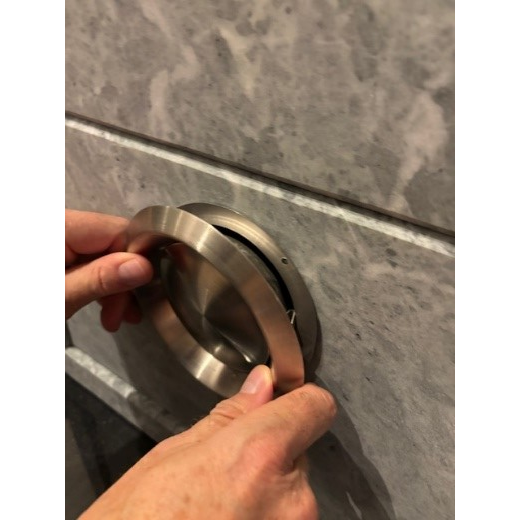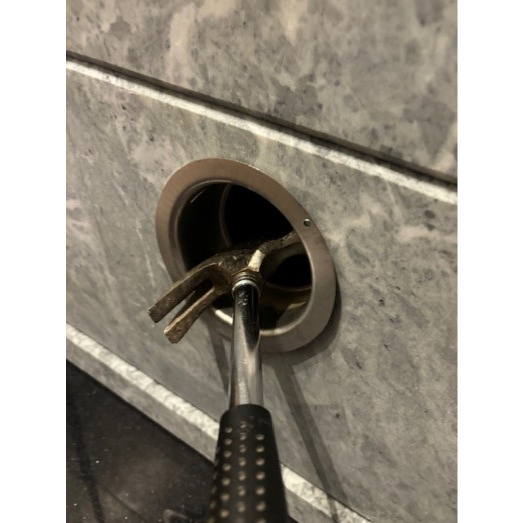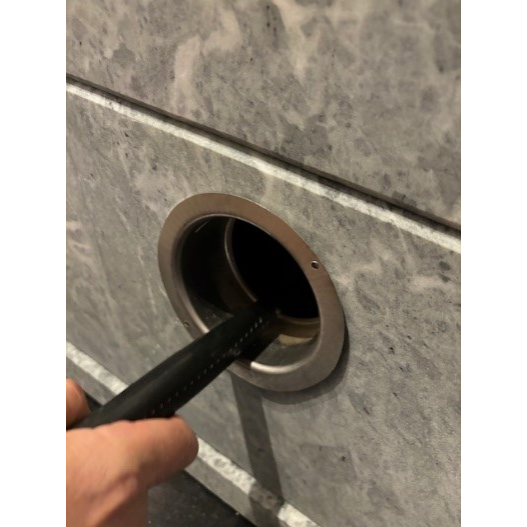How to Use Your Masonry Heater
The beauty of a masonry heater is that you do not have to throttle the air in order to save wood, so you have heat for a longer period of time. You can fire with enough air supply, because the heat is taken up into the stones and radiated into your room over many hours.
Burning With Wood
Here are some simple tips on how to fire with wood to get the most out of your masonry heat and the wood.
- Make sure to use dry wood.
- Ensure the wood is finely split. Place the largest pieces at the bottom and the smallest on top.
- Place a few fire starters between the small pieces of wood and light them.
- Make sure you have completely opened the air supply. Our stoves work only properly in that way. It is not possible to ‘save fuel’ with suppressing the air supply in the fire box.
- Enjoy the fire!!
- Regularly check the firebox for ash. Remember that a layer of ash is good for wood burning. It creates some air and turbulence that makes combustion easier.
Burning with pellets in the Blucomb burner
Remove the bottom plate covering the Blucomb burner. Before filling the pellet burner with pellets, the bottom of the burner must be swept clean for soot particles. This ensures that just enough air can be supplied for the gasification of the pellets.
- Fill the burner with pellets.
- Use firelighters or fire gel for easy ignition.
- Ignite it in several places.
- Let it burn quietly, enjoy the flames, until it is completely burned out.
- Close the air supply so that the stored heat remains in the stones and is radiated into the room. If the air supply is not closed, part of the heat will escape through the chimney.
Wait at least 2 hours before refilling the Blucomb burner (it will also be too hot to clean and refill).
Forget to clean the pellet burner before filling?
Let’s admit it: we forget things. It can happen that you forget to sweep the burner, the grate at the bottom, clean before refilling the burner with pellets. Combustion will then be very poor.
- If you discover that you have forgotten to clean the burner before igniting the fire, you can carefully tap the grate of the pellet burner from below with a hammer. This will cause the soot particles to fall down. You can do this easily through the cleaning hole.
- If you realize at the beginning of the fire that you forgot to clean the burner, you can, unless the burner is already hot, do the same as described above: gently tap the grate from below with a hammer.
- If you find out after some time that the burner is not functioning properly because you forgot to clean it, you must wait a few hours after the fire has gone out and then clean it thoroughly, also tapping the grate from below with a hammer. There will be quite a bit of charcoal buildup.



Cleaning Your Heater
A soapstone masonry heater has to be cleaned from time to time. We recommend regularly checking the stove for the buildup of soot particles. These can hinder the absorption of heat from the smoke at the top of the stove. This soot buildup on the walls can be caused by moist wood, poor draft, too large wood pieces, or too little wood. This happens to all of us to some extent, so occasional checking is important.
Here’s how to check and clean:
- Remove the top plate or the front part of the top plate (for top pipe connection).
- Check if there is a lot of soot on the walls.
- If there is more than half a centimeter of soot, it needs to be removed.
- This can be easily done with an ice scraper or something similar.
- Push the soot down to the bottom layer and the stove will function perfectly again!
- If the soot buildup is more than half an inch, the process has gone too far. Then the top layer with stones needs to be dismantled.
- Clean the stones and also remove the soot that is on the layer of stones below, in case you have two layers of stones above the burn chamber.
- Use gloves and protect your floor from soot stains.
- Rebuild the top layer. Soot stains can be easily removed by washing with a sponge or cloth and soapy water.
Cleaning Below the Pellet Burner
Occasionally, approximately once a month during the winter months, you should remove the ash that lies below the burner. This can be done with a vacuum cleaner.
Cleaning the Glass
Every stove will get soot on the glass. This is because the glass quickly loses its heat and thus becomes much colder than the flames nearby. The glass is easy to clean:
- Use a damp cloth with some soot and wipe off the caked soot.
- Or use a special sponge, such as from Schott Robax, for cleaning. If the soot is very difficult to remove, it is likely that not only dry wood has been burned… Scrubbing well with soap or stronger cleaning agents is then necessary.
